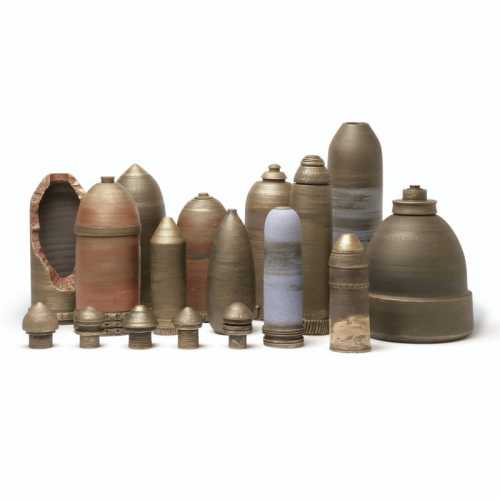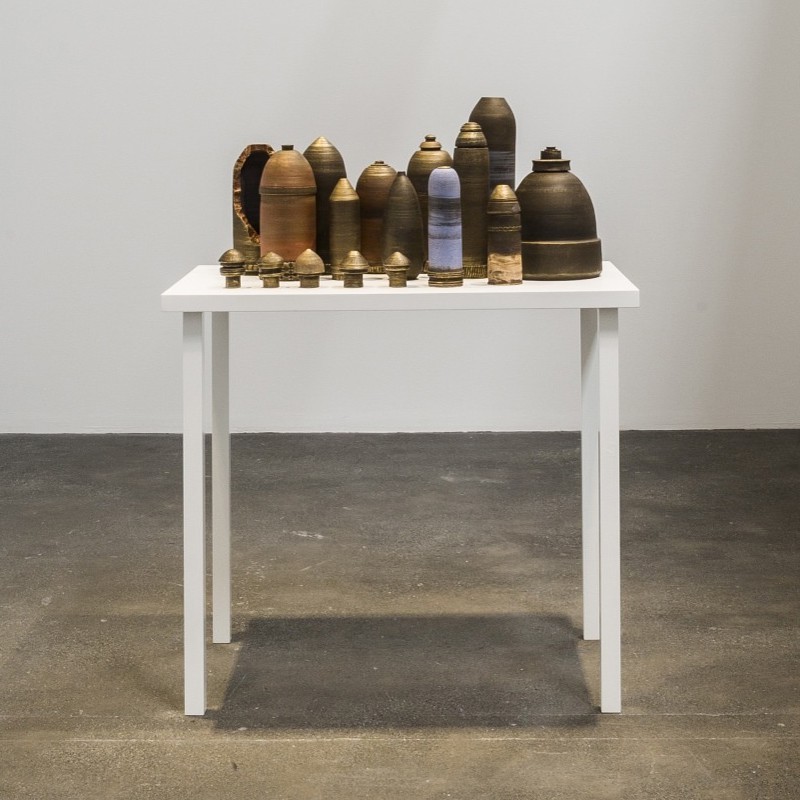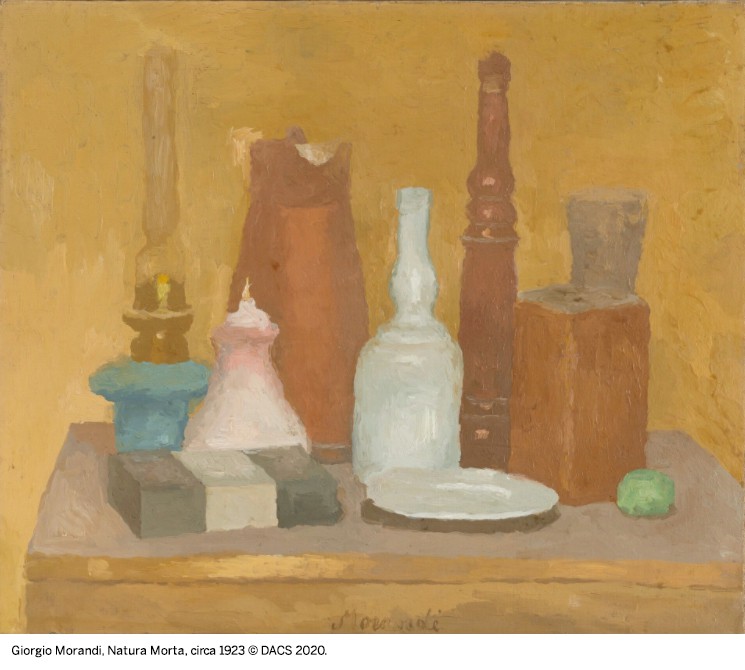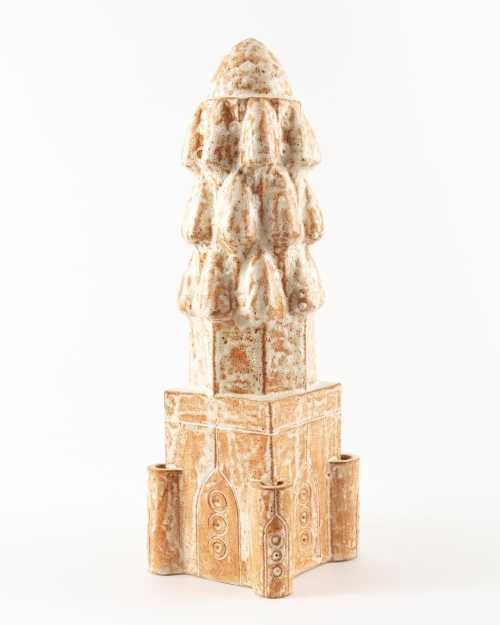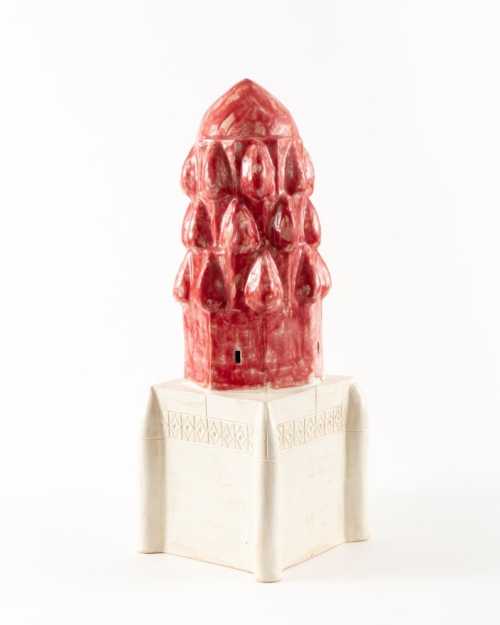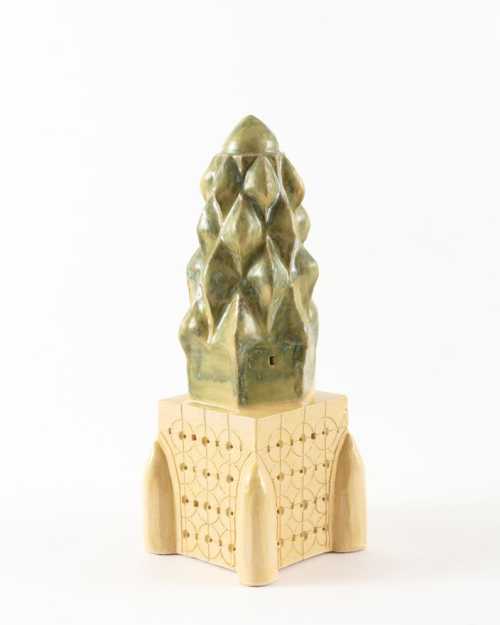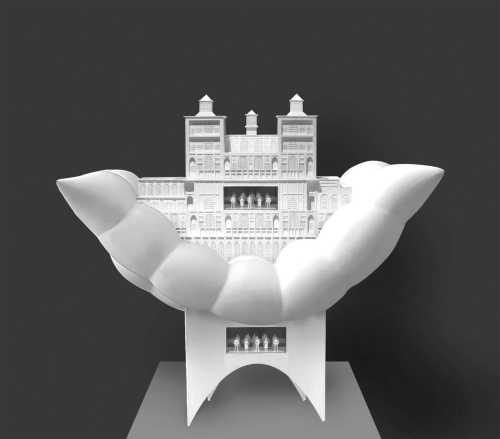- STILL LIFE (1/3) 2013 - 2014
- acrylic on glazed ceramic in 17 parts
- Sculpture
- Editions: تکنسخه
- each: signed and dated 2013 or 2014, this work is unique
largest: 40.5cm.; 16in.smallest: 7.5cm.; 3in.
Artwork Description
Shahpour Pouyan (b. 1979, Iran) has an MFA in Integrated Practices and New Forms at Pratt Institute, New York, and an MFA in painting from the Tehran University of Art. Prior to this, he studied neoplatonic philosophy and received a diploma in mathematics and physics. Between 2007 and 2009 he also taught both art history and the history of Persian architecture at Science and Culture University, Tehran. A clear polymath, his academic studies point to the depth and sophistication of his artistic practice.
Pouyan’s work is a commentary on power, domination and possession through the force of culture. Pouyan’s interest lies in singling out particular objects whose images captivate him – by painting them he releases the feeling of anguish they create. Allegory permeates his practice; he creates symbols for the aspiration of power. In doing so, he draws out painful dichotomies: attempts at grandeur come from deeply lonely and empty beings, pointing to a desire for grandiosity that becomes almost tragic and absurd.
Still Life recreates a display of German artillery shells documented in an amazing color photograph taken by the French army during the last two years of World War I. Pouyan found the image while researching that conflagration, one characterized by unprecedented devastation, bloodshed and loss of life resulting from the untimely combination of new, powerful weaponry and dated battlefield tactics/military strategy. In this rare vintage photograph twelve artillery shells of different calibers, shapes, widths and heights, each standing upright on its flat end, crowd a smallish tabletop—a floral tablecloth covering its surface. Five nose fuses are neatly lined up in a row on the table’s front left area. The distribution of objects on the tabletop is clearly intentional and precisely thought out. This careful composition combined with the image’s warm sepia tone, muted colors and soft focus make it less reminiscent of war photography than a painted still life by the 18th-century French master Jean-Baptiste-Siméon Chardin or the twentieth-century Italian Giorgio Morandi. One shell in particular, at the center of the arrangement, looks strikingly like a vase, a small lip-like flare crowing its pointed top.
Pouyan painstakingly recreates this array of objects in ceramic translating a two-dimensional image of a three-dimensional composition back into a three-dimensional installation. Little details, grooves and bands at the bottom of the shells, notches or tabs on the shell’s pointed end, are subtly emphasized, rendering them almost decorative. Through accident or design the reproductions are somewhat squatter than the originals, and somewhat resemble domes. The new material, more brittle and vulnerable than the metal of the original shells, also exaggerates some of the aesthetic transformations initiated by the soft patina of the vintage photograph. On one hand, the object composition becomes less a display of trophies from or remnants of a devastating war than a formal study of the relationship between objects, an investigation of ratios, scales, shapes, and tones. On the other, the still life as vanitas or memento mori, as a visual meditation on the transience of all things earthly and the inevitability of death, is supplanted by the somewhat more sinister domestication, through an aestheticized mode of display, of instruments of death.
Select solo exhibitions include, After Examining The Logbook, The Doctors Assume They Are Dealing With The Plague, Galerie Nathalie Obadia Cloitre, Saint Merri, France (2019); Untitled, Barbara Walters Gallery, Sarah Lawrence College, Bronxville, New York (2019); The Incarnation of the Body Politic, The Armory Show, Focus Section, with Lawrie Shabibi, New York (2018) and The Hooves, Sixty Six Art Gallery, Tehran (2010). Recent group exhibitions include, Clapping With Stones, Rubin Museum, New York (2019); The Moon: A Voyage Through Time, Aga Khan Museum, Toronto (2019); In the Fields of Empty Days, Los Angeles County Museum (LACMA), Los Angeles (2018); LB01, Lahore Biennial, Pakistan (2018); Rebel, Jester, Mystic, Poet: Contemporary Persians, Museum of Fine Arts, Houston, Texas (2017); The Silk Road and World’s Civilizations, 7th Beijing Biennale, National Art Museum of China, Beijing (2017); The Jameel Prize 4 exhibition, Asia Culture Centre, Gwangju, South Korea (2017); Rebel, Jester, Mystic, Poet: Contemporary Persians, Museum of Fine Art, Houston, Texas (2017), Insights, Art Basel Hong Kong, with Lawrie Shabibi, Hong Kong (2017), Iranian Voices, Recent Acquisitions of Works on Paper, British Museum, London (2017); Recentring Modernism, Insights Sector, with Lawrie Shabibi, Art Basel Hong Kong, Hong Kong (2016); Memory and Continuity: A Selection from the Huma Kabakci Collection, Pera Museum, Istanbul (2016); Global/Local 1960-2015: Six Artists From Iran, Grey Art Gallery, New York University, New York (2016); Young Collectors, The Elgiz Museum, Istanbul (2014), and Whorled Explorations, Kochi-Muziris Biennale, Kochi Island, India (2014).
In 2016, Pouyan was shortlisted for the Jameel Prize 4 by the Victoria and Albert Museum, London, UK and has been awarded the Civitella Ranieri Fellowship for Visual Arts in Umbria, Italy.
Pouyan’s work is included in many prominent private and public collections namely, The Museum of Fine Arts, Houston, Texas; Herbert F. Johnson Museum of Art, Cornell University, New York; Collection of Robert Littman and Sully Bonnelly, New York; The Abby Weed Grey Collection of Modern Asian and Middle Eastern Art, New York; The British Museum, London; The Metropolitan Museum of Art, New York; Mohammed Afkhami Collection, Dubai, Huma Kabakci Collection, Istanbul; SYZYGY, New York; The Farjam collection, Dubai; Zoroastrian Cultural Institute, Paris and the Tehran Museum of Contemporary Art, Tehran.
Pouyan currently lives and works in New York.
More lots by Shahpour Pouyan
Realized Price
13,631 USD
Min Estimate
9,714 USD
Max Estimate
13,619 USD
Average Artwork Worth
+19.643%
Average Growth of Artwork Worth
Sales Performance Against Estimates
Similar Artworks
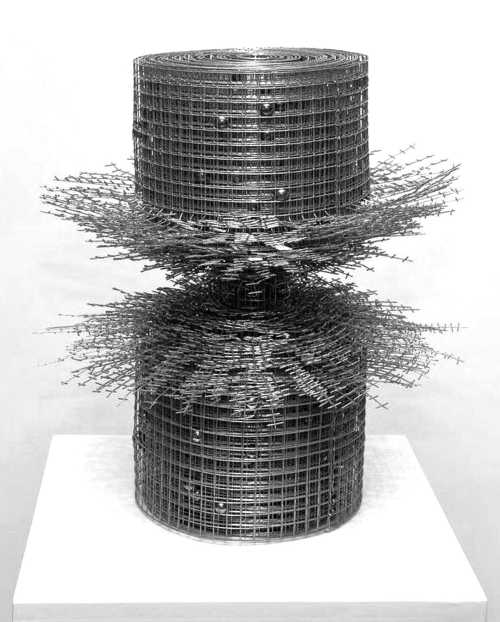
Record of a Birth
Estimation
8,000,000,000﷼
16,000 USD
-
12,000,000,000﷼
24,000 USD
Realized Price
8,800,000,000﷼
17,600 USD
12%
Sale Date
Tehran
-
12 December 2023
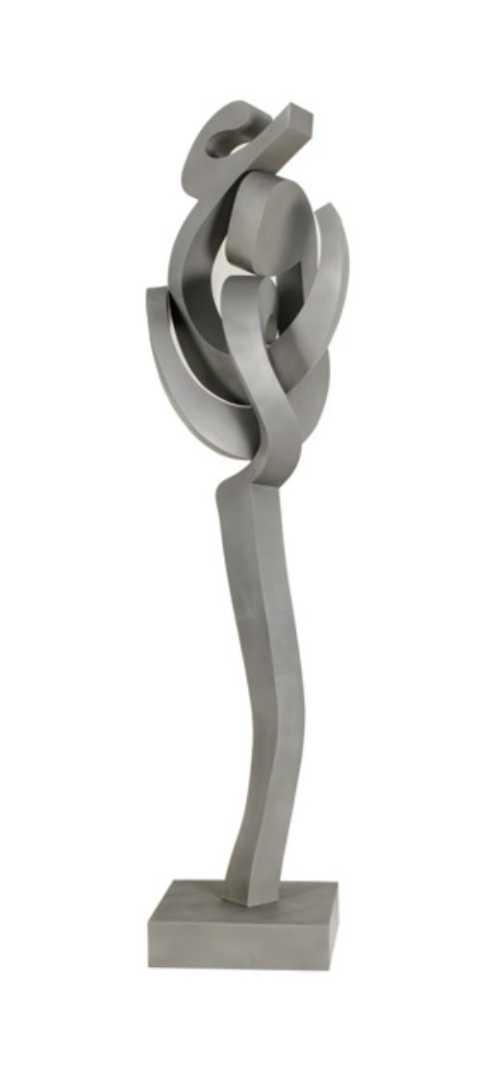
Lili's Saddle
Estimation
5,000,000,000﷼
8,333 USD
-
7,000,000,000﷼
11,667 USD
Realized Price
7,700,000,000﷼
12,833 USD
28.333%
Sale Date
Tehran
-
5 July 2024
